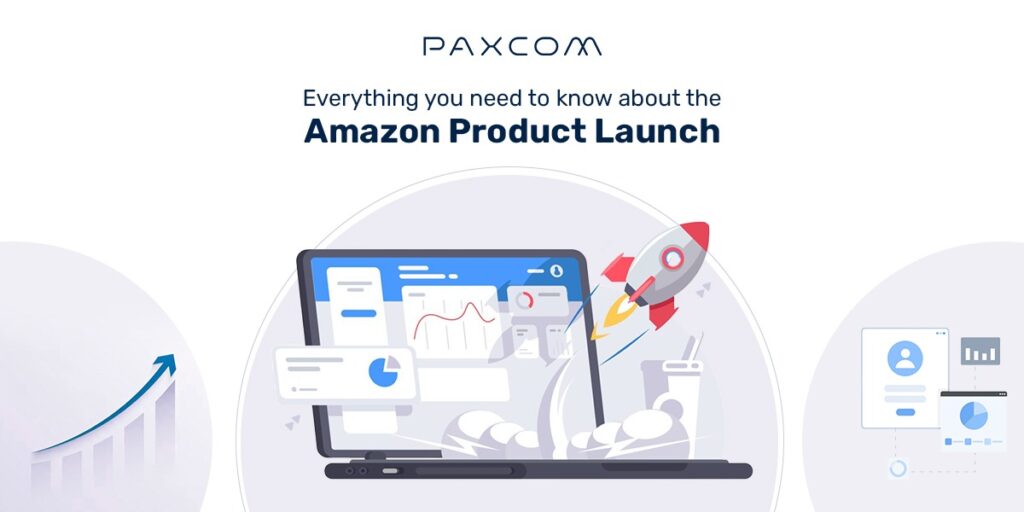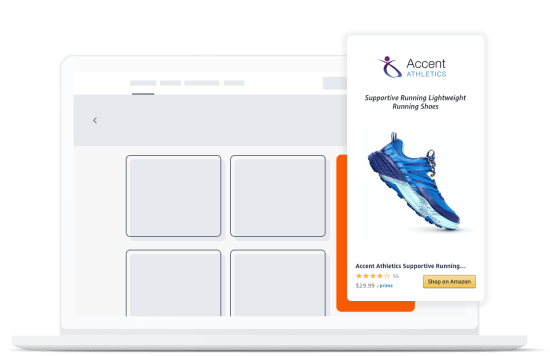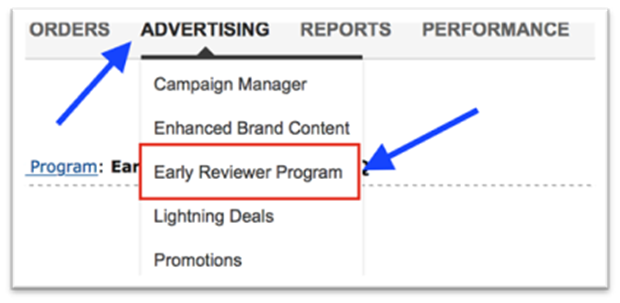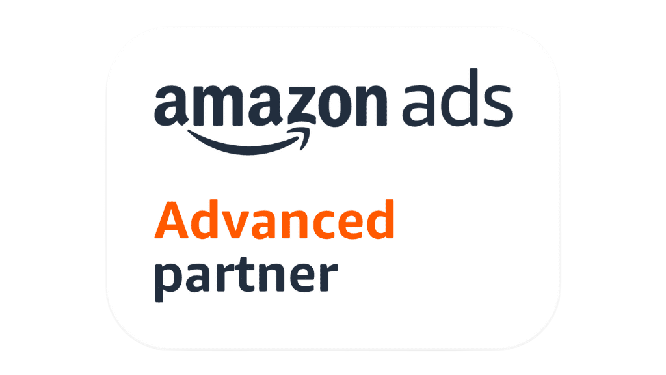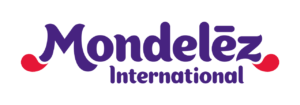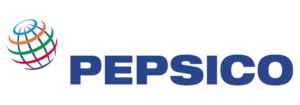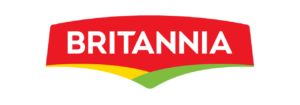Are you gearing up for an Amazon product launch? Congratulations! Launching a new product is pivotal in growing your business, especially if you’re targeting the vast and competitive Amazon marketplace. However, a successful Amazon product launch doesn’t happen by chance. It requires a well-crafted product launch strategy that incorporates various essential elements. In this guide, we’ll delve more into the intricacies of launching a new product on Amazon, helping you maximize visibility and sales.
Amazon is a giant platform that is currently dominating the eCommerce industry. Each month, more than 197 million users begin their search on Amazon. It has become a must-have service for users who want efficient online shopping solutions with a vast selection of over 350 million products and fast delivery options. It offers various products from marketplace sellers and its own private catalog of more than 12 million products.
Take advantage of its large customer base and economy of scale for your launch.
“Our vision is to be earth’s most customer-centric company; to build a place where people can come to find and discover anything they might want to buy online.” -Amazon’s mission statement.
Table of Contents
Understanding the Essence of an Amazon Product Launch
Before diving into the strategies and steps involved in a successful Amazon product launch, let’s clarify what it entails. An Amazon product launch is the process of introducing a new product to the Amazon marketplace. This product can either be a brand-new creation or an upgrade to an existing item. Any effort to bring something new or improved to Amazon customers constitutes a product launch.
As Amazon’s mission statement cites being customer-centric and having every available product in its marketplace, it is not surprising that it could be the perfect and popular platform to launch a product. Launching a product and keeping the statistics in mind can be daunting. All it requires is a good branding strategy. Sometimes, you have to take a plunge and see where it lands you.
Let’s first understand what Branding strategy means. Branding is more than just the name of a business. It is the set of associations that consumers make with your company, product, or service. In essence, it’s what people think about you when they hear your name. A branding strategy is a plan for promoting and creating a brand identity. It defines, differentiates, and positions the brand from its competitors.
Some of the essential steps to follow for a good branding strategy:
- Define your ideal target audience; you need to know who your customer is and what they can expect from you
- Finalize the Product Niche. Choose a product with high demand, a high-profit margin, and low competition
- Create content using relevant keywords. A well-made content strategy is a way to execute a brand strategy.
- Keep improving your product, make sure your product is well-received by the market, and keep a close watch on competitors.
- Build your brand strength and promote your product to keep up with the competition and grow your business. Amazon product launch is the beginning of the journey, not the end.
Launching a product might require a lot of work. It would be best to get the word out (i.e., the importance of branding we discussed), elicit interest, and make sure your brand gets the best exposure.
Why a Well-Defined Amazon Product Launch Strategy Matters
Imagine launching a product on Amazon without a clear strategy—it’s akin to a tree falling in a silent forest. Nobody hears it, and it goes unnoticed. That’s precisely why a robust product launch strategy is imperative. Here’s why:
- Targeted Marketing: An effective product launch strategy helps you identify the right audience and market for your product. This eliminates the need for haphazard marketing campaigns and ensures that your product reaches the right customers at the right time.
- Enhanced Visibility: Amazon is a crowded marketplace, and standing out is challenging. A well-planned launch strategy boosts your product’s visibility and helps you secure a prime position in search results.
What Are the Types of Amazon Product Launch?
Amazon product launches come in various forms, depending on your goals and market dynamics. Two common types are:
- Soft Amazon Product Launch
A soft launch targets a limited audience within a specific geographical area. It serves as a test phase to gather feedback and iron out issues. Often referred to as a Beta Launch, it allows you to refine your product based on user input.
- Hard Amazon Product Launch
A hard launch is a grand, media-focused event. It’s used as a powerful marketing tool, especially by well-established brands. Apple’s product launches, like those for the iPhone, MacBook, or iPad, are prime examples of hard launches known for creating global hype.
Steps to Plan a Successful Amazon Product Launch
1. Product Category Analysis
Launching a product without choosing the right category is like attending a music festival without knowing the performing bands. Here’s why product category analysis is indispensable:
Market Pulse: Understand market trends and growth rates to identify the ideal product category for your entry.
Competitor Evaluation: Analyze competitor products, features, pricing, and services to gain insights.
Customer Behavior: Study your potential customers’ buying habits and tailor your marketing campaigns accordingly.
2. Set the right Prices
Pricing your product correctly is paramount. A misstep here can hinder your Amazon product launch. Key pricing considerations:
- Calculate Profit Margin: Factor in all costs, including inbound, Amazon fees, storage, and advertising costs, to determine your profit margin.
- Set Minimum and Maximum Rates: Establish a pricing range that ensures profitability while initially aiming to reach the break-even point.
- Competitor Analysis: Price competitively within your niche, but only sometimes opt for the lowest price. Create perceived value while remaining competitive.
- Consumer-Driven Pricing: Utilize psychological pricing based on customer traits and factors like time, place, goods, or service.
- A/B Testing: Experiment with different prices, compare performance, and make data-driven decisions.
- Leverage Coupons and Deals: Discounts can boost customer loyalty and visibility.
- Dynamic Pricing: Continuously update prices to stay competitive in Amazon’s dynamic marketplace.
Learn more on how to optimize your Prices on Amazon here- https://paxcom.ai/blog/pricing-amazon-products-optimize-listing-for-profitability/
3. Set up an Amazon Seller Central account
Creating an Amazon Seller Central account is essential. This unified interface allows you to list and manage your products. Ensure you provide accurate details:
- Supplier Address
- Box Dimensions and Weights
- Number of Units per Box
- Transport Carrier
- SKU for the Product
Labeling stickers Amazon provides are crucial for tracking your product in the warehouse.
4. Create your Amazon inventory
So, after setting up an Amazon Seller Central account, establish an inventory in the warehouse, and that can be done in two ways.
(a) Fulfillment by Amazon (FBA)
Amazon FBA is a fulfillment service that enables sellers to store their products in Amazon’s warehouses and deliver them to customers through its logistic network. This means sellers don’t have to worry about the storage and shipping of the product.
Note: Make sure to list the product with the correct details on the site.
If you are curious about How Amazon FBA works- Here is the guide for you. Don’t worry- we come well prepared.
(b) Merchant-fulfilled or Seller-ship Program
Amazon Seller Ship is a program that helps sellers manage their inventory and fulfillment process. This program lets you ship items to Amazon’s fulfillment centers, where they can be stored, packed, and shipped on demand directly to customers.
Paxcom’s Kinator software assists brands with inventory alerts and geographical inventory tracking, providing them with daily/weekly alerts to refill the out-of-stock products on multiple channels, simultaneously avoiding lost sales and the data of their competing brands. Our dashboard and reports summarize the in-stock percentage availability of each channel to get an overview of stock availability at each channel.
Learn more here on how out-of-stock instances can hamper your sales.
5. Create the Perfect Amazon listing
Consider the importance of eye-catching content; it makes and breaks your game. When you sell on Amazon, your entire marketing strategy revolves around getting more traffic through your product listings, Titles, Descriptions, Images, and A+ content, and in order to create an optimized listing, some of the things need to be established as follows;
We all know how the Amazon algorithm works when it comes to conversions. To come in top search results, sales velocity matters; to achieve that, let’s understand its inner-engineering.
RESEARCH, RESEARCH, and RESEARCH!
Conduct competitor analysis to analyze your competitor listings to get an insight into your product launch and look for keywords they have included in their titles, descriptions, bullet points, and A+ content. You can learn more on how to optimize content for better ranking here.
To make your keyword research better, Discover Long-tail and short-tail keywords., It helps you to stay relevant for a longer time. Let’s take an example for a clear understanding of how Long-tail keywords work. They have at least three words in them. “Budget laptops under 15,000”- has three words in it: “budget,” “laptops,” and “under 15,000”.
Short tail keywords are only one or two words: “laptops.” These are less competitive and easy to rank for. However, it is hard to get traffic from them because of the low search volume.
50% of search queries consist of at least four words, according to 99firms
So, instead of putting all eggs in the basket, spread your efforts over several keywords.
Format of 10/10 product listing based on Paxcom’s expertise
- Titles: Creating short titles with relevant keywords to boost click-through rate
- Descriptions and bullet points: It lets you stand out from the competition.
- Images: Amazon has strict guidelines regarding images. They should be in HD and rich in content.
- A+ content is a new, enhanced content that provides more than just information. But lets brands tell their story with a combination of visuals and text.
6. Make use of Amazon Ads Solution
Did you know that 75% of Amazon shoppers are looking for new products, with 68% engaging in “window shopping” without a particular product or brand in mind? This represents a golden opportunity for emerging brands to showcase their offerings to the right audience and earn consideration for purchase.
Amazon Ads solutions can be your catalyst for a triumphant product launch, delivering results in three pivotal ways:
- Help Audiences Discover Your Product: Ensure your product becomes a part of shoppers’ consideration set.
- Reach Browsing Shoppers: Target those actively seeking products akin to yours.
- Remarket to Potential Buyers: Re-engage with audiences already interested in your product.
Now, let’s delve into Amazon Ads solutions that can help your product launch, diminishing variability and ensuring consistent outcomes:
Let’s glide through various Ad properties:
- Sponsored Products
These cost-per-click ads serve as your gateway to discovery and sales. They appear in shopping results, channeling traffic to your new product’s detail page. This not only boosts page views but also encourages valuable product reviews. As your campaigns roll out, closely monitor and adjust budgets and keywords to align with key moments in your product’s lifecycle.
Source: Amazon Ads
- Sponsored Brands
Crafted to drive sales through engaging and actionable ads, Sponsored Brands incorporate familiar elements from the Amazon shopping experience, such as price, star ratings, and Prime eligibility. These ads offer vital product details right within the ad placement. Sponsored Brands also empower you with customization options, allowing you to showcase new product releases, different headlines, various featured product combinations, and links to your Store pages.
Source: Amazon Ads
- Amazon Stores
Elevate brand awareness and educate audiences about your new product’s features through Stores. This free, self-service product enables brand owners to curate multipage stores that showcase their brand, products, and value propositions on Amazon. Visitors can explore a curated collection of your brand’s products in a brand-centric shopping experience, accessible on both mobile and desktop.
- Sponsored Display
This is your solution for remarketing, expanding your customer base, and driving purchases. Sponsored Display complements your Sponsored Products and Sponsored brand campaigns with additional targeting capabilities. For example, suppose shoppers express initial interest in your product but wait to make an immediate purchase. In that case, remarketing allows you to re-engage them with display ads as they browse third-party websites.
Source: Amazon Ads
- Amazon DSP (Display Side Platform)
For advertisers aiming to scale their display advertising efforts, Amazon DSP offers programmatic buying of display, video, and audio ads at scale. It empowers you to engage relevant audiences based on lifestyle, purchase behavior, and media consumption signals. These ads can be displayed on Amazon-owned sites and leading publishers’ sites.
7. Tweak your PPC Campaign Optimization Approach
To ensure a successful lift-off, your PPC (Pay-Per-Click) strategy plays a crucial role but requires some strategic adjustments. Here’s how you can refine your PPC approach for a successful Amazon product launch:
- Increase Bidding Intensity: Visualize your product launch as the ignition of a rocket. Your primary goal initially isn’t immediate profitability but visibility. Think of this phase as the ignition that propels your product into the Amazon marketplace.
- Disable Dynamic Bidding: Amazon’s dynamic bidding is like an automatic course correction system. However, during the launch phase, your aim is not precision but maximizing sales. Disable dynamic bidding and adhere to fixed bids for consistent control.
- Leverage Amazon Product Targeting: Consider your established products as guiding stars. By associating a PPC ad with these stars, you achieve two crucial objectives:
- Directing the attention of customers who are already navigating within your sphere, potentially leading them to explore more of your offerings.
- The selected star likely boasts an array of positive reviews, acting as a beacon of trust and credibility for potential buyers.
8. Reviews
Consider this: More than 49% of customers meticulously pore over product reviews before purchasing. Yet, when you’re at the dawn of your product launch, acquiring reviews can be a formidable challenge. This is where Amazon’s Early Review Program steps in as a potent ally.
Amazon’s Early Review Program is an exciting addition, tailor-made to assist customers in amplifying the buzz about their latest acquisitions. Here’s how it works: Customers receive complimentary items in exchange for providing feedback on them. It’s a symbiotic arrangement benefitting both you and your customers.
With Amazon’s early review program, you can quickly build up hype around your product launch and increase its chances of success. You will also gain valuable insights from real-time insights generated from customer reactions. This information is crucial to improving your following product or service offering.
Leverage Sentiment analysis as a complementing partner to this- Analyzing the sentiment embedded in these reviews lets you gauge customer reactions, preferences, and pain points. This data is akin to a compass, guiding you toward refining subsequent product or service offerings, ensuring they remain attuned to customer sentiment and market dynamics.
Read more about Sentiment analysis, and get your answer for all the What’s, How’s, and Why’s here- https://paxcom.ai/blog/sentiment-analysis-to-improve-ecommerce-customer-experience/
Some Theories Behind Successful Amazon Product Launch
- Marketing Theory: Decide on the most suitable advertising and promotion methods for your Amazon product launch, whether traditional, email-based, or influencer-driven.
- Profitability Curve: Analyze how your product’s profit or loss evolves. Use this information to allocate budgets for promotion.
- Diffusion of Innovation: Understand your target market’s adoption behavior using the diffusion of innovation theory. Identify early adopters, pre-order customers, and late adopters.
- Pricing Theory: Price your product strategically by considering market dynamics, competition, consumer interaction, and product category.
Conclusion
The success of an Amazon product launch can significantly impact your business’s growth. A well-executed launch can propel your product to new heights, while a poorly planned one can have adverse consequences. Understanding the key elements of a product launch strategy and incorporating theories and tactics that align with your goals can increase your chances of a successful Amazon product launch. Remember, a well-prepared launch can make all the difference in the competitive Amazon ecosystem.
Ready to launch your product on Amazon? Start by crafting a comprehensive Amazon product launch strategy encompassing all the steps and strategies mentioned here. With careful planning and execution, your product can capture the attention of Amazon shoppers and achieve remarkable success.
These are our eCommerce experts’ full-fledged, tried, and tested methods for a streamlined sale and launch process.
Paxcom’s Solution for Amazon product launch
Navigating the intricacies of the e-commerce landscape can be challenging, often diverting your attention from what truly matters – driving more sales. At Paxcom, we understand the hurdles you face, and our mission is to empower you to overcome them seamlessly.
Our team comprises seasoned e-commerce experts well-versed in catering to brands of all sizes, spanning a diverse spectrum of product categories. With an exhaustive skill set encompassing everything from meticulous product listing and content optimization to harnessing the power of Amazon Marketing Services, cutting-edge data analytics, efficient inventory management, and impeccable order fulfillment, we’ve got you covered at every step.
As an integral facet of our Amazon Launch Solution, Paxcom offers the advantage of our proprietary in-house software, Kinator. This decisive tool steps in as a post-launch strategy, ensuring your ongoing success. Kinator diligently scours all publicly available data, generating tailor-made reports that serve as your compass in the ever-evolving e-commerce landscape. From on-shelf availability and search visibility reports to category visibility insights, product pricing analysis, and promotional strategy recommendations – our software equips you with the data-driven insights needed to make informed decisions that drive your business forward.
